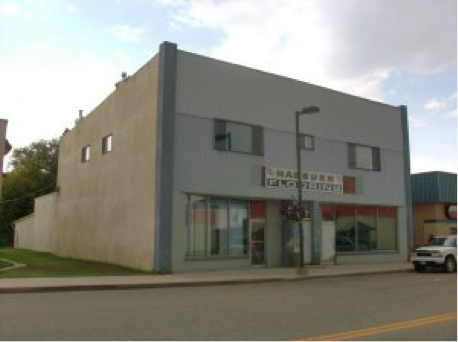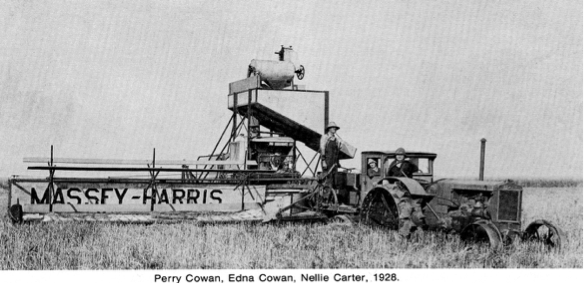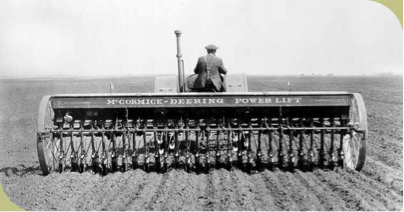Back in the summer of 1902 this item appeared in the
local paper…
The corner stone of the second, and present, church building, which was
built under the contractorship of the late James White, was laid on
Tuesday, August 27, 1902. Notables present were: Hon. Rodmond P.
Premier of Manitoba; Rev. Rural Dean McAdam Harding, Brandon; and Rev.
Rural Dean Mac- Marine, Portage la Prairie. A garden party was held at
the home of Mr. and Mrs. J. W. McCrae following the ceremony.
James William McCrae, host of the Garden Party, was another of the
first “1878” homesteaders.
Born in Huron County, Ontario, on August 4, 1857, the son of Robert
McCrae, he came to Manitoba in 1878 and settled on a homestead one and
a half miles from Carberry. He farmed until 1882 when he went into the
agricultural implements business.
That same year he married Margaret Goggin of Peterborough, Ontario.
He also was a grain buyer, a horse dealer, and an insurance agent. He
served for seven years on the Carberry town council, three years
as Reeve of the Rural Municipality of North Cypress,and a term as
Mayor. He was a Mason, served on the School Board and the Carberry
Agricultural Society.

Waters Block – 125 Main Street – built 1901
by James Wellington McCrae to house his implement dealership.
A Sad Story
The Waters Block was once home to Bloomingfields Mortuary
In 1918 at the time of the Spanish flu epidemic, people were warned to
stay indoors and avoid contact with others.
By November 11, 1918, “Armistice Day”, people wanted to celebrate
despite the warnings to stay at home. They thought the worst of the flu
was over. The town had a big party and most everyone showed up. Perhaps
most of the danger had passed, except for one couple who’d come
“from away”. They infected half the people at that party and many died.
Reid Dickie
Implement Dealers
Mr. McCrea’s business as an implement dealer was a key one in Carberry
and one that many other individuals also attempted over the years. All
would have been very familiar with all lines of farm machinery, and of
the firms that manufactured them.
Prior to 1900, all manufacturing consisted of short-line companies:
full-line companies emerged primarily as a means to overcome
competition. International Harvester Company (IHC), for instance, was
formed in 1902 as an amalgamation of the five largest existing
manufacturers of harvest equipment at the time.
Canada had two full-line companies: Massey-Harris (later to become
Massey-Harris-Ferguson, and finally Massey-Ferguson) and Cockshutt,
both located in the Hamilton region of Ontario. The Massey Company at
one time was the world’s largest manufacturer of farm equipment;
however, it fell on hard times and went into receivership in 1988.

Key Farm Implements in 1900
Gang Plow – a combination of two or more plows in one frame
Harrow – implement for breaking up soil
Broadcast Seeder – used for spreading seed
Swather – machine to cut hay and cereal crops
Thresher – machine used to separate grain from stalks and husks
Wagons
All of these pieces of machinery were typically drawn by horses and
eventually tractors.
The Massey-Harris Company
The firm was founded in 1847 in Newcastle, Ontario by Daniel Massey as
the Newcastle Foundry and Machine Manufactory. The company began making
some of the world's first mechanical threshers, first by assembling
parts from the United States and eventually designing and building
their own equipment. In 1910, the company acquired the Johnson
Harvester Company located in Batavia, New York, making it one of
Canada's first multinational firms.

A disc seeder in operation.
|





